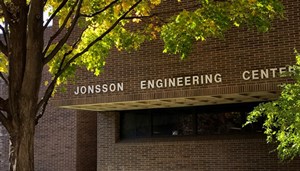Even engineers need a break now and then. Outside of the classroom and the lab, RPI offers an impressive array of social, athletic, cultural, and general interest opportunities. Off-campus, our home city of Troy has undergone a renaissance in recent years, and you’ll find great food, entertainment, nightlife, arts, and a relatively low cost of living.
RPI Union
As a building, the Rensselaer Union contains lounges, meeting rooms, businesses, dining, and social spaces. As an organization, the Rensselaer Union oversees campus clubs and organizations, club sports, campus programming, student employment, and student government. In both cases, it’s a hub of life and activity on campus, and it’s run in partnership with students. Join one or several of more than 200 clubs and organizations or start a new one through the Union.
Student Life
The Office of Student Life provides resources about the student experience throughout campus and beyond.
Troy
Historic downtown Troy is home to great restaurants, boutique shopping, galleries, cafes, historic sites, and more. Don’t miss the famous Troy Waterfront Farmers Market, held Saturdays year-round.
